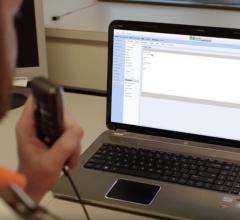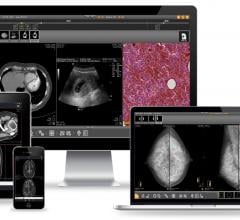
RedRick Technologies, a provider of ergonomic radiology workstations, monitor mounting solutions and reading room environment guidance, has helped the new Penn Musculoskeletal Center implement their newest musculoskeletal radiology reading room, which may also serve as a model for future reading room designs at Penn Medicine.
“In line with the tenets of value-based care by the American College of Radiology’s Imaging 3.0 initiative, the new reading room for the Division of Musculoskeletal Imaging at The Hospital of the University of Pennsylvania (HUP) has been embedded on the same floor as the orthopaedics department in the new Penn Musculoskeletal Center,” explained Woojin Kim, M.D., assistant professor of radiology at the Perelman School of Medicine at the University of Pennsylvania. “The goal is to facilitate interaction between the radiologists and the orthopaedic surgeons while providing an environment that is convenient to our patients.” The reading room design plan considered layout, design, and ergonomics to help ensure a comfortable and productive work environment for radiologists in which they can communicate with specialists.
RedRick Technologies, through their regional partner Evolve Technologies, helped address layout, acoustics, and lighting challenges as well as provide eight new ergonomic radiologist workstations that matched the four existing workstations. All workstations are adjustable sit/stand tables, incorporating ComfortView Monitor Mounting systems, recessed data hubs, integrated ambient back-lighting, and adjustable task lighting.
“The department plans to apply various design elements of this reading room in developing future reading rooms,” said Kim. Steven Horii, M.D., director of medical informatics in the radiology department at HUP adds, “We have another reading room we are in the early stages of planning to update, and we are going to bring together our multi-disciplinary planning team early to ensure a more streamlined process. We want to employ the same solutions and thought process, when optimizing acoustics, lighting, ergonomics and space, but since every reading room is different, we want to ensure our process accounts for these differences.”
“Increasingly, our clients ask us for assistance designing or refreshing their reading environments; particularly when they understand the benefits of looking beyond ergonomics. The right workspace and reading environment can encourage the exchange of information that results in the best possible clinical care,” said Greg Patrick, president of RedRick Technologies. “Ergonomic, well designed workstations can optimize reading room workflow, creating opportunities for improved productivity and the clinical collaboration that can benefit patient care.”
For more information: www.redricktechnologies.com


 November 04, 2021
November 04, 2021 









